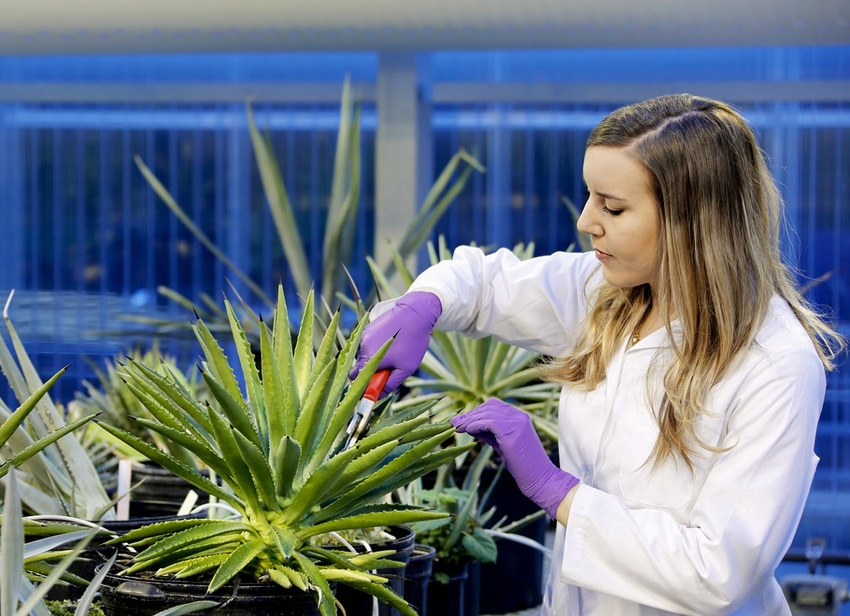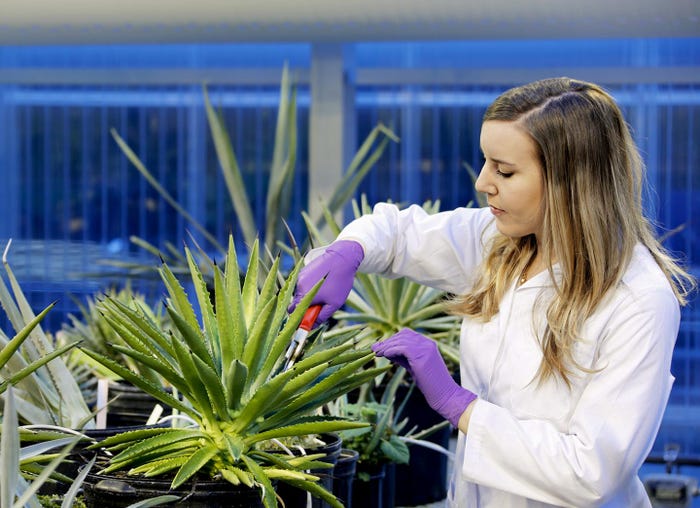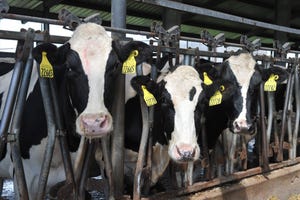Semi-arid plants offer clues for drought tolerance
New study of water-saving plants advances efforts to develop drought-resistant crops.
December 5, 2016

As part of an effort to develop drought-resistant food and bioenergy crops, scientists at the U.S. Department of Energy's Oak Ridge National Laboratory (ORNL) have uncovered the genetic and metabolic mechanisms that allow certain plants to conserve water and thrive in semi-arid climates.

Kaitlin Palla, University of Tennessee Bredesen Center for Interdisciplinary Research
Semi-arid plants such as agave have adapted to survive in areas with little rainfall by developing a specialized mode of photosynthesis called crassulacean acid metabolism (CAM). Unlike plants in wetter environments, CAM plants absorb and store carbon dioxide through open pores in their leaves at night, when water is less likely to evaporate. During the day, the pores, or stomata, stay closed while the plant uses sunlight to convert carbon dioxide into energy, minimizing water loss.
ORNL scientists are studying the unique metabolic mechanisms that allow CAM plants to conserve water, with the goal of introducing water-saving traits into bioenergy and food crops. The results of the team's latest study, which focuses on agave, were published as the cover story of Nature Plants.
The CAM photosynthetic process, discovered in the 1950s, has largely remained a scientific curiosity, but researchers are now examining it as a potential solution to maintaining food and bioenergy crop yields during water shortages and drought.
"Today's demand on agricultural systems to provide food, feed, forage, fiber and fuel call for more comprehensive research into understanding the complexities of CAM plants," ORNL co-author Xiaohan Yang said. "As we uncover each layer of the CAM process, our studies aim to speed up the evolution of crops to give them the ability to thrive in more arid environments as the availability of fresh water becomes limited."
To gain a comprehensive view of the complex CAM system, the team used ORNL's mass spectrometry to compare the molecular traits of agave with a control plant, Arabidopsis, which uses a more common photosynthetic process.
The team evaluated genetic behavior that signals stomatal movement in each plant over the same 24-hour period. Their study revealed that the timing of daytime versus nighttime stomatal activity varied significantly between agave and Arabidopsis. The research also pinpointed which genetic and metabolic mechanisms signal CAM plants to open and close their stomata. Understanding the timing of these signals will be key to transferring CAM processes into crops such as rice, corn, poplar and switchgrass, ORNL said.
"Further research is required to understand how this molecular timekeeping regulates CAM, but the results of this study provide new insights into the complexity of CAM biodesign, featuring an integrative understanding of CAM at the molecular level," said Gerald Tuskan, ORNL corporate fellow and co-author. "The transfer of CAM molecular machinery into energy crops would facilitate their deployment onto marginal lands and would simultaneously reduce competition with food crops."
The study titled, "Transcript, Protein & Metabolite Temporal Dynamics in the CAM Plant Agave," included co-authors Paul Abraham, Hengfu Yin, Henrique Cestari De Paoli, Nancy Engle, Ryan Agh, David Weston, Stan Wullschleger, Timothy Tschaplinski, Daniel Jacobson, Robert Hettich, Gerald Tuskan and Xiaohan Yang of ORNL; Anne Borland of the University of Newcastle and ORNL; Deborah Weighill and Piet Jones of the University of Tennessee and ORNL, and John Cushman and Sung Don Lim of the University of Nevada.
You May Also Like



